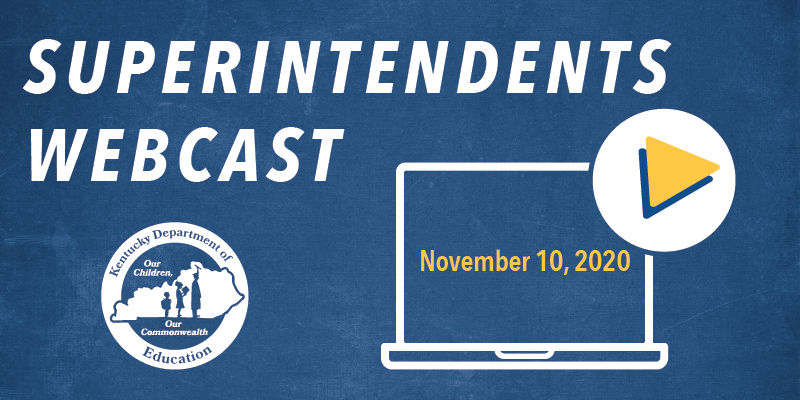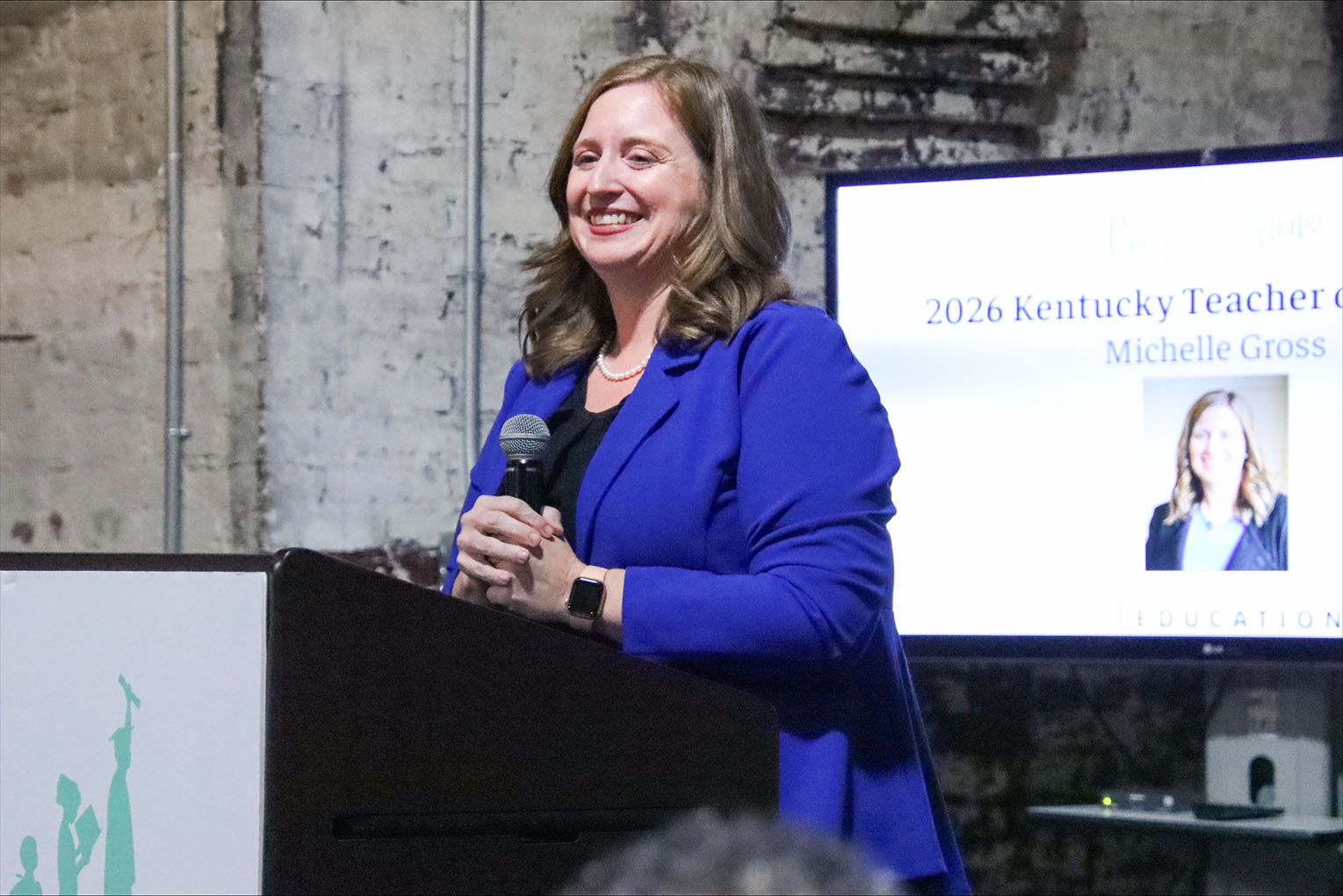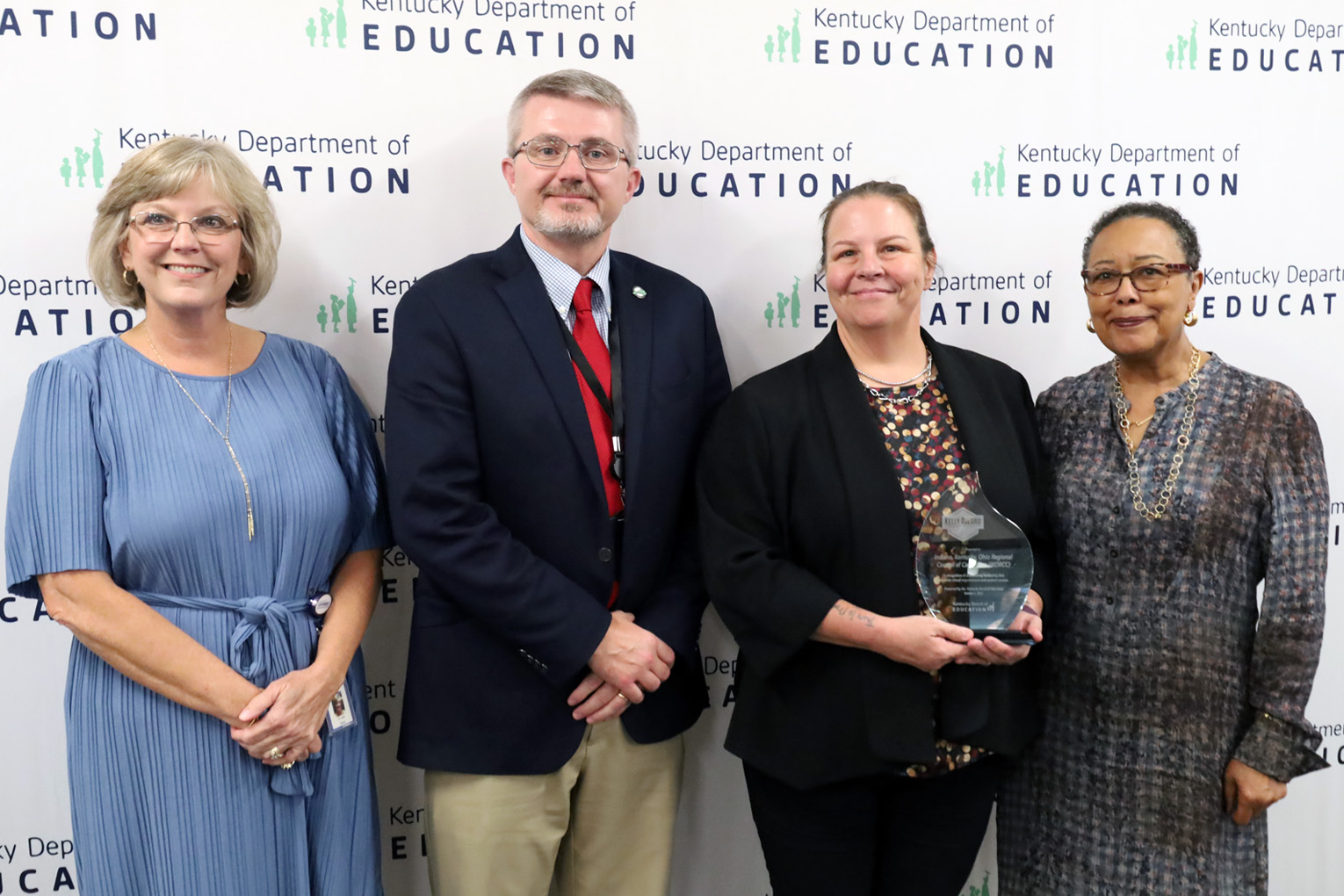 Schools should be safe havens for students and staff, promoting diversity, equity and inclusion for all, the Kentucky Department of Education’s (KDE’s) new chief equity officer said during the Special Superintendents’ Webcast on Nov. 10.
Schools should be safe havens for students and staff, promoting diversity, equity and inclusion for all, the Kentucky Department of Education’s (KDE’s) new chief equity officer said during the Special Superintendents’ Webcast on Nov. 10.
Everyone should work to eliminate barriers in schools that perpetuate student inequities, said Thomas Woods-Tucker, who serves as deputy commissioner of KDE and also leads the Office of Teaching and Learning.
He said school district leadership must ask how they can serve the social and emotional needs of students along with staff, up to and including superintendents.
“We need to make sure that we’re taking care of each other,” Woods-Tucker said.
Schools need to acknowledge diversity, equity, inclusion and social-emotional learning as important aspects of their curriculum, as those issues don’t stop at school walls.
KDE’s strategic plan makes equity, achievement, collaboration and integrity priorities, and in July, the Kentucky Board of Education (KBE) affirmed its commitment to racial justice, Woods-Tucker said.
The issues are not limited to ethnicity or skin color, he said, as “each student comes to our schools with unique needs.”
He said educators need to keep discussing racial trauma and implicit bias, regardless of a particular school’s racial makeup, and suggested they read the “Guidance on How Districts Can Facilitate Conversations About Race-based Stress and Trauma” document written by KDE and partner agencies.
As part of a statewide equity and inclusion scan, he said districts should look for equitable practices already in place in their schools and ask whether the district itself has an equity and inclusion action plan or includes equity in its strategic plan.
Woods-Tucker said he hopes to create an equity toolkit for schools and begin outreach within a few months. In the meantime, he wants feedback from superintendents on equity and inclusion in a Google Form.
KDE Budget
The state’s budget shortfall is likely to be much smaller than earlier estimates, and flexible funding through the federal Coronavirus Relief Fund could reduce it further, said Robin Kinney, associate commissioner in KDE’s Office of Finance and Operations. That means the projected 8% cut to all state departments – including KDE – will not be implemented, she said.
Since the last state budget agreement was only for one year, the General Assembly will take up a new budget when it convenes in January, Kinney said.
School quarantine updates
The number of COVID-19 cases and rates of infection are rising rapidly across the state, said Dr. Connie White, deputy commissioner of the Kentucky Department for Public Health (DPH). The increase already is straining public health resources such as contact tracing, she said.
Kentucky is dealing with 10 times as many cases per week as in June when the flagship Healthy at School guidance was released, White said. Hospitalizations for COVID-19, patients in intensive care and those on ventilators have increased at the same time.
There have been no major outbreaks in schools, with the main driver of infection being private gatherings, White said. She is concerned family gatherings for Thanksgiving on Nov. 26 will lead to a further spike.
Lt. Alyson Cavanaugh of the U.S. Public Health Service Corps, who also is epidemic intelligence service officer for the U.S. Centers for Disease Control and Prevention, outlined the differences between quarantine and isolation during the superintendents’ webcast.
Both are public health tools effective at reducing disease transmission, along with face masks, social distancing and contact tracing.
Isolation and quarantine often are confused but differ, Cavanaugh said. Quarantine, typically 14 days for COVID-19, removes someone who has been exposed to the disease from contact with others until it is clear whether they have been infected.
Isolation, usually 10 days, removes people confirmed to have COVID-19 from contact with others until they are no longer infectious.
The effectiveness of both depends on how quickly and thoroughly people quarantine or isolate, Cavanaugh said.
“If it’s not a complete quarantine, you are still putting others at risk,” she said.
Anyone who knows they’ve been exposed to COVID-19 or tests positive for it should quarantine or isolate without waiting to be told, White said.
Mask-wearing cuts the risk of transmission but does not eliminate the need for quarantine. People can’t “test out” of quarantine, since their infection might not yet be strong enough to register, Cavanaugh said. Local health departments are the final authority on whether quarantine is warranted.
Assessing COVID-19 exposure in schools is especially difficult, so she said schools need to collect as much information as possible for health officials.
Quarantine and isolation are not intended as punishments, rather to stop disease transmission and save lives, Cavanaugh said.
School Closure Discussions
By law, the authority to close schools lies with local school boards, Kentucky Commissioner of Education Jason E. Glass said. District officials should have “serious conversations” on the subject when their community – not the school itself – goes into the “red zone” on the four-color COVID-19 Mode of Instruction Metrics for K-12 Education from DPH, he said.
Infection rates are a problem for the whole community, White said. Gov. Andy Beshear released Red Zone Reduction Recommendations for local leaders, and schools should reach out to other community leaders and share their own guidance, she said.
In extreme cases, health departments can order the closure of buildings they believe are disease reservoirs, including schools, Glass said. That hasn’t been done yet, but he said the future of the disease remains unpredictable.
Winter Sports
During the webcast, it was noted that some school districts already are asking whether they should begin practice for winter sports. Data from fall sports shows no outbreaks so far related to athletics, Kentucky High School Athletics Association (KHSAA) Commissioner Julian Tackett said.
“It’s really your call based on what’s going on in your community,” he said.
But districts should carefully discuss whether it is crucial to start more sports practice now, and weigh that against the contagion risk from more public gatherings, Tackett said.
“We’re trying to strike a balance here and let you make those local decisions,” he said.




Leave A Comment